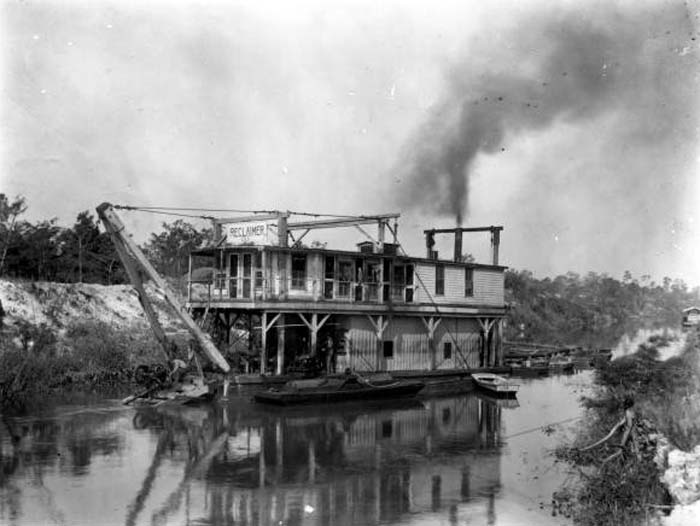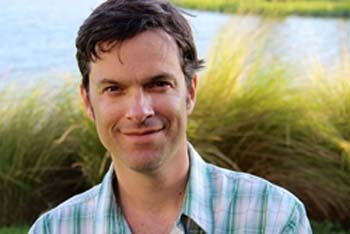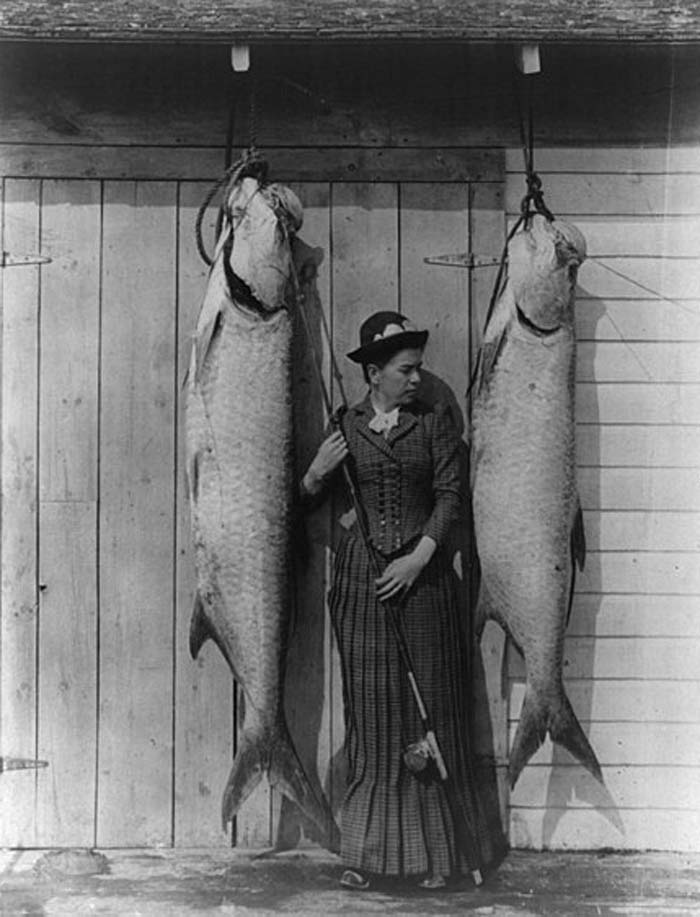
The environmental failure of the Everglades began in 1891 when a Philadelphian by the name of Harold Disston thought he could tame Mother Nature with canals – he died broke. The elected Governor of Florida in 1905, Napoleon Bonaparte Broward, ran on the promise to create an “Empire of the Everglades,” by wringing the last drop of water out of that “pestilence-ridden swamp.” Image 1906 building a lock on a newly dug canal. A commons image.
The Everglades’ Wild Hope
The fate of the South’s last frontier teeters on the brink—after decades of losing ground to environmental devastation, the endangered Florida habitat and its legions of supporters may finally be turning the tide
by Monte Burke / Garden & Gun / October/November 2019
NOTE: The following is a partial excerpt. Scroll down for link to complete story.

Monte Burke is a staff writer at Forbes magazine and has also written for The New York Times, Outside, Men’s Journal, Town & Country, and Garden & Gun, among many other publications. He is the author of the books Saban: The Making of a Coach, 4th and Goal, and Sowbelly, and is a recipient of Barnes & Noble’s “Discover Great New Writers” award. He grew up in New Hampshire, Vermont, North Carolina, and Alabama and now lives in Brooklyn with his wife and three daughters. Photo Simon & Schuster.
[dropcap]T[/dropcap]he Everglades—the largest subtropical wilderness in the United States—are where Melville’s “great floodgates of the wonder-world” swing wide open.
Dave Perkins, the executive vice chairman of the Orvis Company, steps up on the bow and begins throwing flawless casts at the tarpon. A little while later, I take my turn. We both come up empty—Sullivan thinks the rowdy dolphins put the tarpon on edge—so we move, making our way to a lake deep in the backcountry, squeezing through an opening in the mangroves just wider than the skiff. There we catch baby tarpon and snook, and spot redfish and largemouth bass.
Perkins tells us about his long history with the Everglades. For him, as for many of us, fishing was his way in. One spring during his teenage years, his father, Leigh, who purchased Orvis in 1965, rented a houseboat and took the family into the backcountry. “That’s when I first fell in love with the Everglades,” Perkins says. Later in life, when he realized what was at stake, that love would begin to manifest itself beyond fishing, in ways that have pushed his company far out of its comfort zone.

And it wasn’t until a few years ago we stopped killing everything just for the boast. These Everglades tarpons are an early testimony 1894. Photo by Joseph John Kirkbride – a commons image. Yes, that’s a woman angler, Mrs. Jack.
The Everglades are dying. On this matter, there is no debate. A century’s worth of dewatering, as well as pollution, dam and canal building, corporate welfare, and indifferent (at best) or bought-and-paid-for (at worst) politicians, has led to one of the greatest ecological tragedies in the country’s history, a fall from Eden that has serious ramifications for human and economic health. The question now for the Everglades—the matter still up for debate—is whether redemption remains possible.
For the first time in two decades, there is, perhaps, reason for guarded optimism, thanks to a rare alignment of interests and events: the unified effort of moderate and radical advocacy groups, some fed-up fishermen, attention-grabbing (and interrelated) environmental devastation on both coasts of Florida, bold corporate activism, and (surprise!) even a few enlightened politicians.
That hope is the good news.
The bad news: We’ve been here before, only to see hope dashed.
Read the complete story in Garden & Gun . . .
[information]
Michael Grunwald’s The Swamp
[/information]
Featured image a commons photo.


